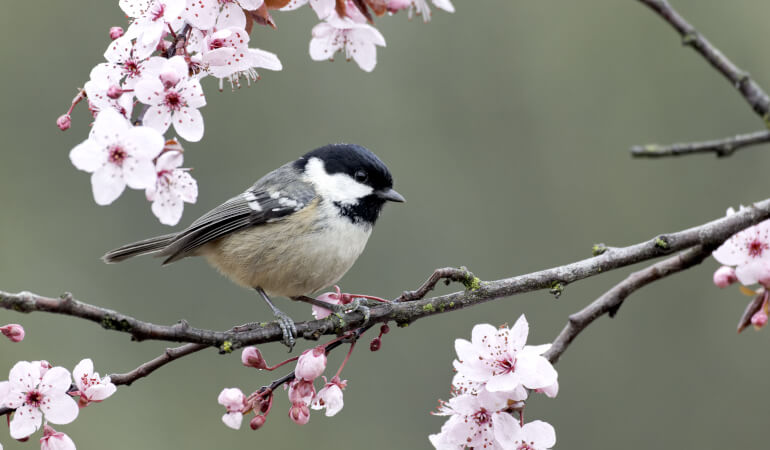
As we bid adieu to the frosty winter, March arrives with a burst of color and a tantalising promise of warmer days. It’s the perfect time to dust off those gardening gloves and let your inner green thumb run wild (if you haven’t already).
But before you get started, find out here what are some essential gardening tasks that you can easily tackle this month. Don’t worry, you won’t need a degree in botany or a magical green thumb to conquer them. Let’s dig in and see what can be done for your garden this March!
Table of Contents
Get the soil ready
Soil preparation is one of the most important steps to consider in March as well-prepared soil allows healthy growth of the greenery.
Also, the high quality of the soil controls erosion and weed growth, roots can easily penetrate the soil, ensuring moisture conservation and a beneficial environment. To prepare the soil correctly, you can start by…
- Testing the soil’s pH balance – This will help determine if your soil is acidic or alkaline. Testing is easy and kits can be purchased from gardening stores. Depending on the results, measures could be taken to improve the soil’s quality. In fact, soil amendments can balance the soil’s properties and boost healthy plant growth. You can add lime to boost the pH, for instance, or sulphur to reduce it.
- Aerating the soil – With the help of a garden fork, start poking holes into the soil. While this could be done manually, you may find it tiring and time-consuming when facing a bigger garden. So if that’s the case, you can use a mechanical aerator. Aeration oxidises the soil and allows water and nutrients to reach the plant’s roots easily, so this is an important step.
- March is the ideal time to remove leftover weeds – This task will prevent weeds from competing with your plants for important resources.
- Adding compost is another way to boost the soil quality – It’s enough to spread a layer of compost or organic material on the soil’s surface. A garden fork can come in handy to work the top few inches of soil gently, so the material is spread evenly.
- Applying mulch to your garden beds – Speaking of improving soil’s health and strengthening plants, we cannot mention also the well-known mulch. Mulch can help preserve moisture, control the development of different weeds and regulate soil temperature.
Planting some green goodies
Now that the soil is ready, it’s time to plant and then plant some more! Whether you plan on adding veggies, some new shrubs or beautiful flowers, you will find suggestions and tips for all of them below.
Adding early vegetables
March is the perfect month to start growing your own garden goodies, like peas, carrots, radishes, spinach, and lettuce.
But before you start digging, remember these crucial steps: find a sunny, dry spot for your veggie babies and prep that soil like a pro. Just refer back to the pointers we provided at the beginning of this article. And as mentioned there, don’t forget to add compost or organic matter to improve the fertility and structure of the greenery you are planning to grow.
Finally, it’s time to get those seeds in the ground. If this is your first time planting, don;t forget to consult with the seed packaging for directions. It will tell you exactly how deep to plant them and what would be the optimal spacing between each seed. Keep the soil wet until the seeds germinate and thrive.
Transplanting perennials and shrubs
- Select only plants that are healthy and well-established.
- Make sure to loosen the dirt before digging the new planting holes. Don’t forget to add some compost or other organic goodies.
- When it’s time to uproot those precious hostas, daylilies, and irises, handle them with care and keep that root ball intact. Plant transplants are placed at the same depth as they were previously growing.
- Remember those plants will need regular watering to settle into their new digs.
- If you have shrubs or trees that have outgrown their existing site, then provide them with adequate water and care so that they may rapidly acclimatise to their new environment.
Starting seeds indoors
Whip out those trays and pots and fill them up with sterilised potting mix. Then, position the trays in a warm, well-lit area. This will boost the proper seedling development.
Once the seedlings have developed several sets, transplant them into larger pots or directly into the garden. This task should be done right after frosty days are gone.
Planting bare-root trees and shrubs
Take the time to select healthy, dormant specimens. When it comes to planting, it’s best to create a spacious, shallow hole to house their precious roots.
Gently disperse the roots throughout the hole and cover them with earth. Firm it carefully around the plant’s base. Water thoroughly to settle the soil and offer the necessary moisture for establishment.
Incorporating cool-season annuals
If you are looking for the right cool-season annuals to enrich your garden, then pansies, violas, snapdragons, and calendulas will make a perfect fit. These plants have beautiful flowerings that will add colours to your garden.
When you go shopping, make sure you choose healthy bedding plants. For optimal growth and flowering, plant the annuals in well-prepared soil with adequate spacing between them.
Pruning the greenery
Ah, yes, the key to cultivating thriving plants is through proper pruning. And luckily, you only need a few tools in your arsenal: shears, loppers, trimmers, scissors, and pruners.
But don’t just go snipping away willy-nilly – different plants may require a specific approach for optimal results. So below you will find specific instructions for different cases.
Pruning dormant trees and shrubs
Use sharp and clean pruning shears or loppers to remove any dead, damaged, or infected branches. Pay attention to the plant’s natural form. Trim slightly above a bud or lateral branch to promote healthy development.
Thinning out crowded branches helps improve air circulation and sunshine penetration. Through pruning, you’ll be reducing the danger of illness for your greenery and improving their overall health.
Shaping hedges and topiaries
- Use hedge trimmers or shears to carefully trim back overgrown foliage.
- Reduce the sides of the hedges slightly towards the top. This way, sunlight will be able to access the lower branches and boost their growth.
- Regular pruning of hedges and topiaries encourages dense foliage.
Deadheading and pruning perennials
Say goodbye to those wilted blooms and scraggly stems. You clear them out with the help of some sharp scissors or pruners.
Give your plants a makeover by trimming them down to a healthy bud or side shoot. Plus, through proper pruning, you’ll have your garden bursting with fresh blooms in no time. Pruning perennials in March helps maintain tidy, compact growth and prevents self-seeding in the garden.
Pruning fruit trees
Proper pruning boosts fruit spurs, improves air circulation and minimises the risk of pest infestations.
Don’t forget to remove any dead, diseased, or crossed branches. Furthermore, don’t let water sprouts occur as they can disrupt the tree’s structure.
Prune fruit trees to have an open-centre or modified central leader form. This will allow sunlight to get through the canopy and reach the growing fruit.
Trimming climbing plants
Pruning climbing plants encourages vigorous growth and abundant flowering throughout the season. Secure new growth to trellises. Guide the stems in the right direction to produce a balanced and appealing flower display.
Furthermore, eliminate any lifeless or feeble stems, along with any branches that are either deviating from the desired direction or obstructing the growth and development of other plants.
Keeping garden pests under control
Another March gardening job to consider is inspecting the garden for pest signs and choosing the most appropriate pest control method.
Some effective ways to protect your outdoor space are crop rotation, handpicking, and attracting natural pest predators. Below, we will explain each one and how to incorporate them into your gardening chores.
Inspecting plants for signs of pests and diseases
First, play detective and scout for any suspicious behaviour from your plants. Watch out for abnormalities, such as discoloured or deformed leaves, holes in foliage, sticky residues, or powdery mildew, which might be early indicators of unwanted visitors.
Detecting pest or disease problems early will keep them from spreading to other plants. So be proactive and nip those problems in the bud before they can affect a substantial part of your outdoor space.
Using a magnifying lens to look at plants more carefully is especially useful when hunting for little pests like aphids and spider mites.
Implementing cultural controls
Want to keep your garden free of creepy crawlies and pesky diseases? Forget pesticides and embrace some clever gardening tactics!
Things like crop rotation, companion planting, and proper sanitation can also help tremendously with the control of pest populations, minimising the risk of disease outbreaks. And for an extra punch, plant some pest-repelling flowers – like marigolds, basil, and lavender – to not only ward off unwanted critters but also attract some helpful bugs.
Handpicking pests
Why not practice some selective gardening by delicately plucking those pesky caterpillars, beetles, and snails off your precious plants?
Keep in mind, though, that this task is efficient for small-scale pest infestations only. Inspect both sides of the leaves and along the stems where pests may hide. To get rid of bugs quickly, put them in a pail of soapy water.
Using natural predators
Another way to keep those pesky pests at is by calling in the reinforcements – natural predators like ladybirds, lacewings, and wasps.
These fierce predators will help keep your garden in check. To keep them around, you will have to plant flowers to provide habitat and appropriate food supplies for each species. Just remember, pesticides may be tempting, but they’re no friend to our helpful insect allies.
Caring for the lawn in March
March is the perfect time to start taking care of your lawn.
- Raise the bar for your lawn by adjusting the mower. It will promote vigorous root development while preventing weed establishment.
- Overseed your lawn to fill in any barren sections. It will stimulate dense, rapid development. Choose grass seeds that are most suited to your soil type.
- Prevent unwanted weeds from taking root and competing with your lawn. Use a targeted pesticide designed to kill broadleaf weeds while preserving your lawn. Apply herbicide on a sunny and dry day to reduce drift and maximise efficiency.
Fertilising
Want to give your plants some much-needed love without damaging their precious roots? Opt for a slow-release fertiliser to deliver critical nutrients without hurting the plant’s roots. There are different products, however, organic fertiliser is a sustainable and more beneficial way to grow plants.
Still remember, too much of a good thing can lead to a not-so-good thing. So make sure not to over-fertilise the plants as it can lead to their overgrowth.
Planning for pollinators
- Attract local pollinators that provide useful nectar and pollen supplies.
- Spruce up your garden with a diverse selection of floral friends – annuals, perennials, herbs, and shrubs – that will keep your yard blooming all year round.
- Group plants from the same species. This approach ensures an effective way to attract pollinators and supply a concentrated food source.
- Include a range of flower forms, hues, and sizes to cater to diverse pollinator species with differing eating preferences.
- Put shallow basins, birdbaths, or tiny ponds in your landscape. Pollinators will have food and water readily available.
- Leave bare soil for ground-nesting bees.
- Set up nesting boxes or bundles of hollow stems for bees.
- Leave bushes, trees, and thick vegetation as nesting and overwintering habitats.
Need a professional gardener?
Enter your postcode to view our rates and availability in your area.
For questions about the services we offer visit our main site or you can always call us at 020 3404 4881
Takeaways
- Aerate the soil, test pH levels and remove weeds;
- Enrich the soil with compost;
- Maintain plant health and shape, including trees, shrubs, hedges, and perennials;
- Plant early vegetables;
- Transplant perennials;
- Add cool-season annuals;
- Handpick pests and encourage natural pest predators;
- Select pollinator-friendly plants;
- Design garden landscaping;
- Provide water sources;
- Use less harmful pesticides;
- Create shelter to attract beneficial pollinators.



